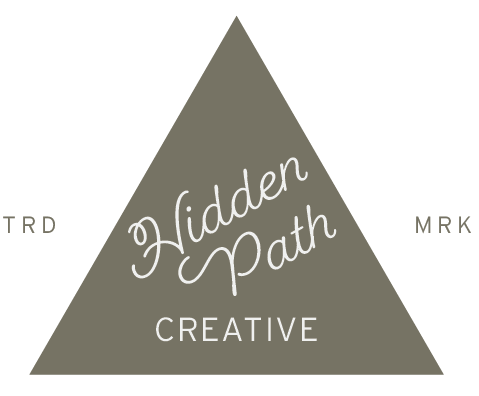10 Tips for Working With a Packaging Designer
1. Start with a Strategy and Goals
Every good project starts with a strategy, and your packaging design is no exception. Like a business plan or marketing strategy, a packaging design strategy outlines your goals and the methods you'll use to achieve them.
Don't get overwhelmed. Creating a strategy doesn't have to be complicated. It can be as simple as writing out the answers to these questions:
Why are you designing new packaging?
What does success look like?
How will you know if your new package design is effective?
The packaging strategy will guide the design choices and decisions you have to make throughout the process.
2. Have a Clear Positioning for your Brand
Brand positioning is a long-term strategy that defines who you are and what you stand for. It helps define your target audience and the problems they face. You'll also have to decide if your brand will take on a specific role in their lives, like being fun or cost-effective. This information will help inform decisions down the road, like what color to use on your box or label. Answer these questions before you start working with a graphic designer:
Who uses my product?
What problem does it solve?
How does my brand fit into their lives?
Like the packaging strategy, your brand positioning helps define what your packaging should look like to connect with your customer.
3. Know What Makes Your Product Unique
If you want your product to stand out, then the first thing you'll need to do is figure out why it's different from those already on the market. You can consider your product unique because of the quality and ingredients, or it could be remarkable because of your brand story and company values. It might even be distinctive because of how it is packaged or priced.
The goal here isn't necessarily to develop a strict hierarchy of things that make your product unique; instead, it's simply to start identifying them as they come up. A packaging designer will ensure this uniqueness comes across in the design.
4. Have A Top Three Messages List For Your Product
You should be able to communicate three key messages with your packaging design:
What is the feature/benefit of your product?
What is the emotional message of your brand?
How to use your product?
5. Share Examples of What You Like (and Don't Like)
When working with a packaging designer, it's beneficial to provide them with examples of package designs that you like and ones you don't. They will use these examples as inspiration and reference during the design process. I know this sounds like extra work for you, but keep in mind that sharing visuals helps your get on the same page with your design partner.
Remember that designers don't want to copy other people's work, and they shouldn't. Designers practice thinking creatively and push themselves to develop unique ideas, so providing them with reference materials is just a way of communicating visually.
Need help finding design examples? We have a variety of packaging inspiration on the Hidden Path Creative Pinterest page.
6. Review Each Round of Designs With a Fresh Eye
You'll be asked to provide feedback and approval at several stages throughout the process. Each time you view a new round of design options, you should look at them as if for the first time:
Look for the aspects that align with your strategy and goals.
Are these designs communicating your three key messages?
Do they speak to your target audience?
How does the visual language support what's inside the package?
Does it make you want to pick it up in a store or open it when it shows up in your mailbox?
7. Offer Feedback Describing the Problem, Not Solution
When it comes to feedback, remember that less is more. The fewer words you can use to describe what you like or dislike about a design, the clearer your feedback will be. Instead of beating around the bush and writing a paragraph about your thoughts, make a few bullet points to help the designer understand your direction.
This approach works well if you're not sure how best to explain yourself in detail during a review session—you'll be able to convey whatever nuances are in your head without losing yourself in tangents and run-on sentences.
Also, remember: don't tell designers how they should do their job. Focus on explaining what's wrong with something instead of detailing its potential fixes—chances are good that a professional designer has already considered all of those things and then some!
8. Be Ready to Share Your Budget
Designers need an idea of your budget to understand better what is possible to create for your packaging—at least as far as printing costs go. Some custom structures might be cost-prohibitive, or some materials and special finishes (that foil!) might be too expensive for your price point. And it's better to find out about these things at the start of a project rather than after the design concept is approved when it can result in delays and added expenses.
9. Know When to Use Your Budget for Extras
When it comes to the scope of your packaging project, you'll want to be clear about what the overall cost includes. Every designer will have a different process and price their work differently. Some designers will price projects based on a per-hour rate, while others use flat-rate pricing for the total project.
Once you understand the cost breakdown, here are some ideas on how you can use your budget:
Pay for extra rounds of revisions: It's common to have more than one round of edits with packaging design projects. It probably won't be an issue if you're working on a designer on retainer. But if you're paying by the project or hourly, keep in mind that extra rounds might run up your total bill.
Pay for an experienced designer: While many newer designers are talented and eager to prove themselves, they may not have all the skills or experience necessary to work with a brand like yours. When it comes to packaging design, experience speaks volumes—just ask any seasoned professional who's been there before! Sure, they may charge slightly more, but you'll benefit from their expertise in exchange. You'll gain access to insider resources and knowledge at every stage of the process, including industry insight and market trends; established relationships with printers; real-world advice about quality standards; feedback from previous clients who've worked with them before; etc.
10. Have a Vision for Long-Term Growth, Even While Focusing on the Design at Hand
An important consideration to keep in mind is the long-term plans for your brand because you want to be sure that your current packaging design doesn't limit you in the future. You probably have a vision for how your product line will expand as your business grows and if so, ask yourself whether the packaging design can lend itself to future products, especially if you plan to grow your line quickly.
It also helps not to get too attached to current trends because packaging lives for anywhere from 6 months to several years before changing. There's also a good chance that whatever design trend you fall in love with today could grow stale by the time it goes on store shelves or online stores. It's better instead to try and choose a style or trend whose appeal lies in its timelessness rather than its fleeting novelty. (Unless your product is trendy, we say go for it!)
Takeaway: You'll be able to get better packaging when you collaborate with an experienced designer.
The key to a successful collaboration between you and your designer is clear and open communication. An experienced designer knows how important it is for a client to be able to express their goals and needs for the project so that the packaging is functional and engaging. Following these ten tips will help you create a great relationship with your designer and keep your project moving smoothly, and should result in a fantastic package design!

